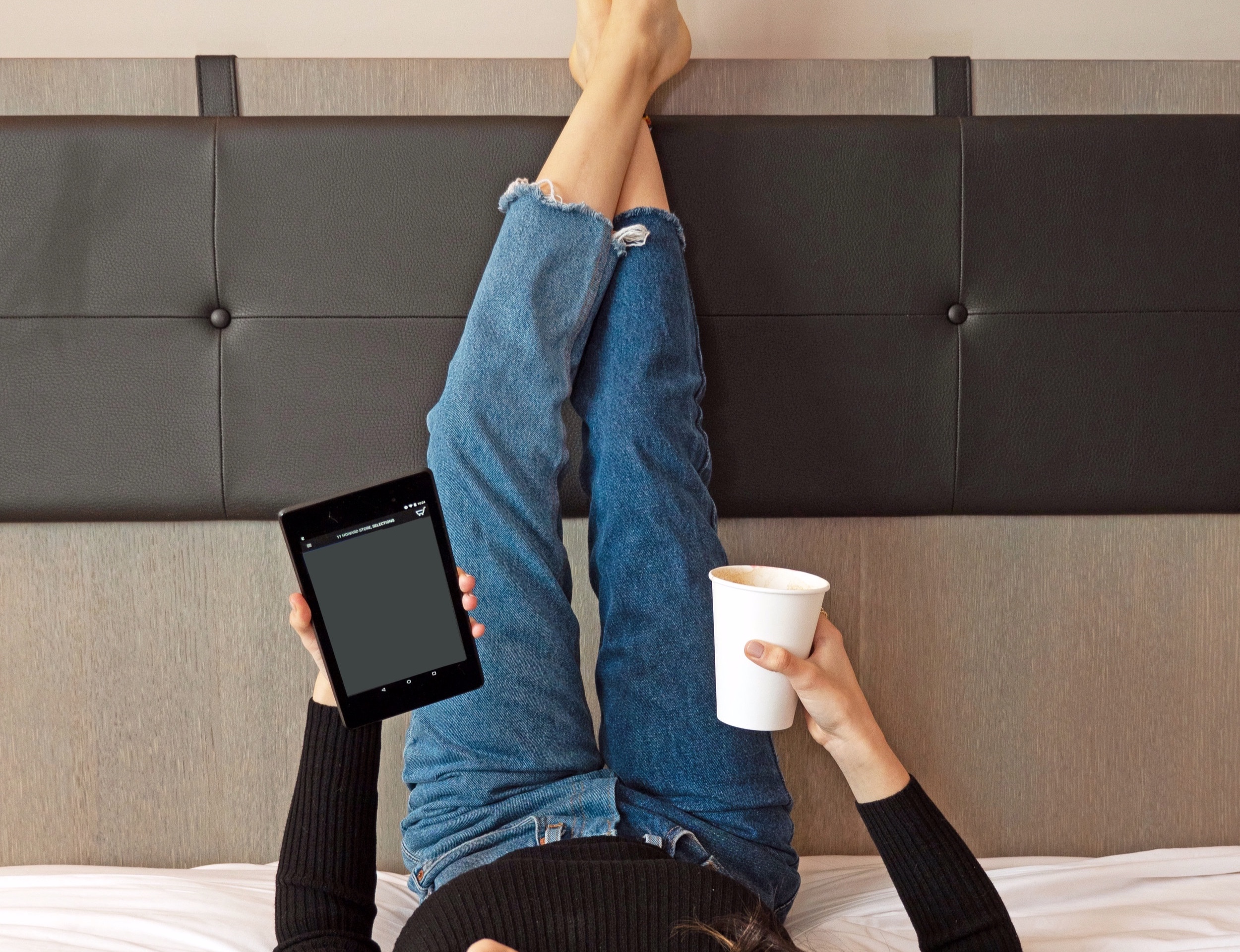The Importance Of Putting Your Feet Up - 90 Degrees To Be Exact
You know that feeling you get when you naturally, sub-consciously, want to put your feet up - on a sofa, after a long day, and tune out? Well, there is a biological and scientific reason why your body wants to do this, and why the saying ‘putting your feet up’ is associated with a relaxing day, or moment in your day.
Lucie McGrane, Doctor of Physical Therapy, Wellness Practitioner, and owner of Feel Well Physical Therapy in Brooklyn, NY, who also provides a lot of onsite PT at Broadway shoes, gives us an insight on the workings of our body and why elevating your feet at a certain angle, often, is good for us.
Putting Your Legs Up On A Wall
Draining fluid build up, recirculate blood
Elevating your feet on a sofa or chair may be your usual go-to to let your feet rest. However, putting your legs up at a 90 degree angle, up against a wall, is what really allows your body to recoup and recover. In short, it brings blood back towards your heart, and promotes lymphatic fluid circulation as well.
Lucie highlights that “putting your legs on the wall at a position where your hips are at 90 degrees allows your sacroiliac joint to be in a neutral open alignment in a decompressed position”.
“Gravity pulls blood towards our feet when we are upright, but inverting our position, gravity can assist with the blood returning into circulation we call this: assisting with venous return”. explains Lucie.
Lower Back + Sacroiliac [SI Joint] Relief
this is when an accurate 90 degrees is important
Ensuring a proper 90 degree angle will aid in lower back relief - these back muscles get stretched in this position [bonus so do your hamstrings]. Sacroiliac relief [the joins by your spine, also carrying your upper body weight all day] can also be achieved in this position. This position ‘offers the iliopsoas muscle [by the SI joint] the opportunity to release fully’ mentions the Yoga Anatomy Academy.
Simple Circulation
90 degrees not important for this
For the purposes of general circulation, your feet do not need to be at a strict 90 degrees, just “need to be elevated above heart level” highlights Lucie.
Things To Know / Be Careful Of
Timing
“Daily is idea, however 3 times a week will also provide the same benefits. In the evenings after a day of standing or performing work that requires upright posturing” advices Lucie “the benefits occur around 15-30 minutes per session, however, there are really no adverse reaction from performing this for less time”.
angles + Positioning
Lucie emphasizes that “ hips need to be no more than 90 degrees of flexion, and the knees should be no less than 90 degrees of flexion”. This means that your legs should not be more than 90 degrees off the floor, aka the angle between your belly and thigh should not be less than 90 degrees. Your knees, if bent, should not be so to a point where they are facing the floor and not directly at the wall. This would apply if you are practicing this position from the floor and resting your leg on a sofa, bench, or similar.
Try not to put anything under your head, definitely not a lot, if a neck support, such as a rolled up towel or thin pillow, is needed, that is fine, but as Lucie highlights “You want the spine to be in a neutral position so that means the ears should line up with the shoulders”.
adaptions
if your hamstrings are tight or need added support
Add a pillow under your hips to decrease length and position of hamstrings.
resting vs stretching your muscles
“Putting your legs up on the wall is a passive position where muscles and soft tissue are not being elongated and are a neutral the length” Lucie says, aka resting.
“Whereas, stretching,” Lucie mentions, “is an active lengthening of soft tissue - usually past their resting position - stretching is more for increasing length.”
putting your feet up on a sofa
As Lucie mentioned above, you want your legs to be above heart level to flow back and circulate - be sure they don’t bend for less than 90degree angle under your knee.
Are Our Own Valves Not Enough to Pace Out Circulation?
Lucie explains “our veins have ‘one way’ valves. This allows for blood in the veins to only move in one direction --> towards the right atrium of the heart.”
“Our circulatory system allows for fluid and particles (aka blood) to enter and exit through blood vessels (ie: veins and arteries) in accordance to laws of hemodynamics (the physics that govern the movement of blood).”
“Gravity plays a part in … the movement of blood, by placing a downward force on these particles in the blood, which can result in pooling of blood at our feet. The mechanical force applied to our calves and feet when walking and moving assists in driving fluid back into circulation.” As we walk we promote little nudges on our feet which promote this.
“However, as working living humans we are not always in motion, therefore blood tends to pool at our feet. Placing [your legs] on the wall assist with reversing the adverse effects of gravity. The valves assist with assuring that once the blood returns into circulation that it is going to the right place.
Some people might sugar from defective valves “as evident in people with extreme swelling and edema” Lucie highlights.
10 Minutes of Renewal + Multi-Tasking
If you are comfortable in this position, or alternatively, if over time you become very comfortable in this relaxing position, you should be able to enjoy any of the following while letting your legs + circulation do their thing:
Meditate
Read an article/book/kindle/magazine
Catch a cat nap








